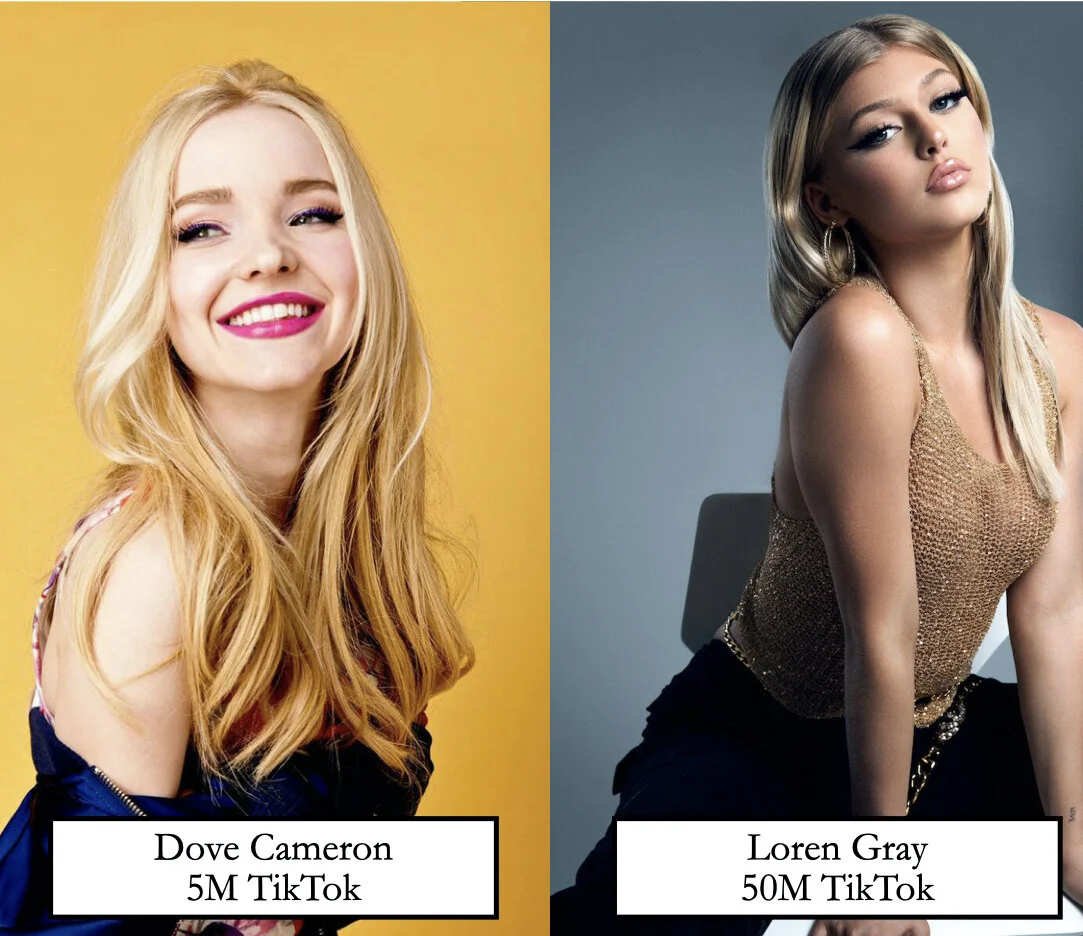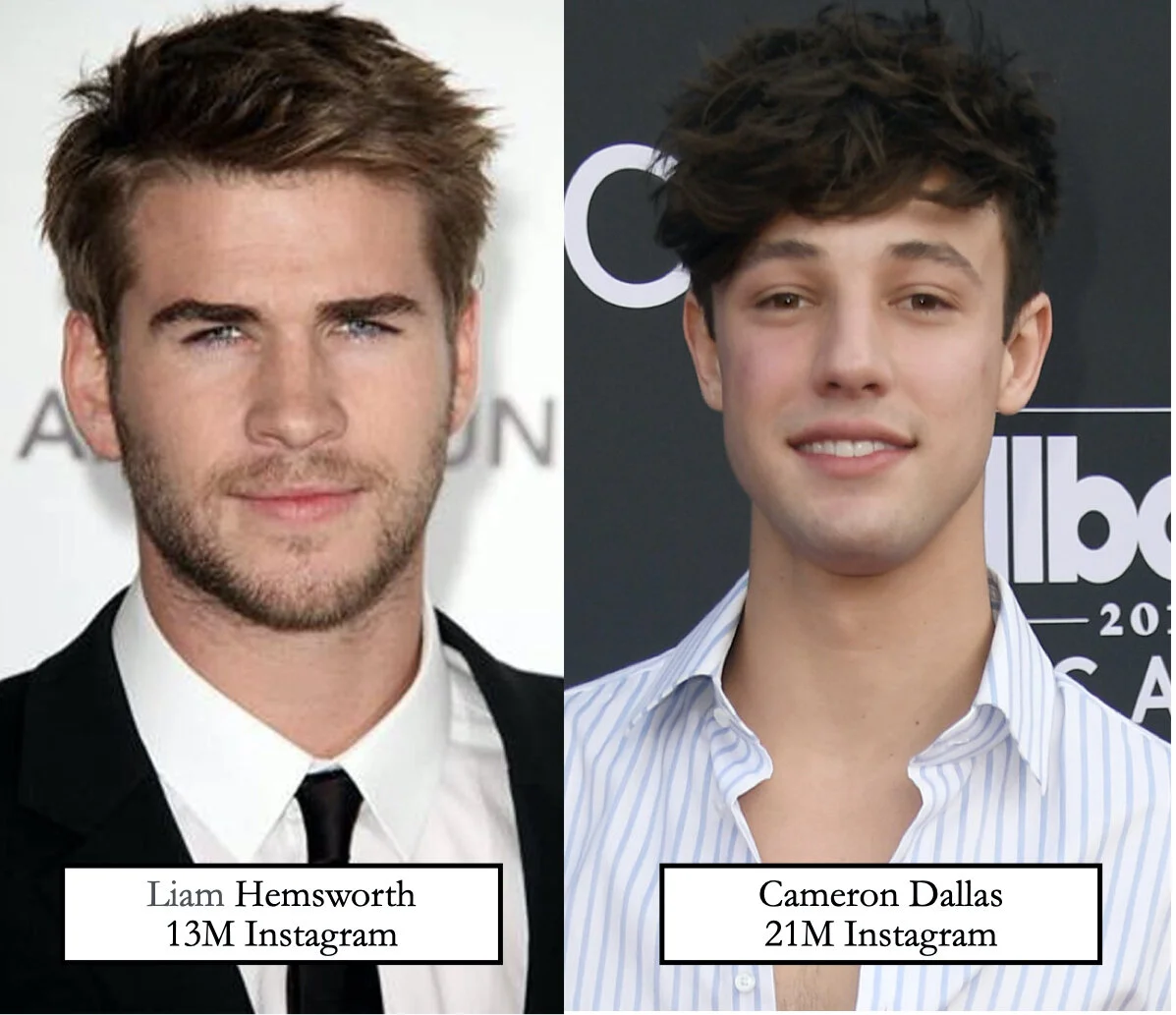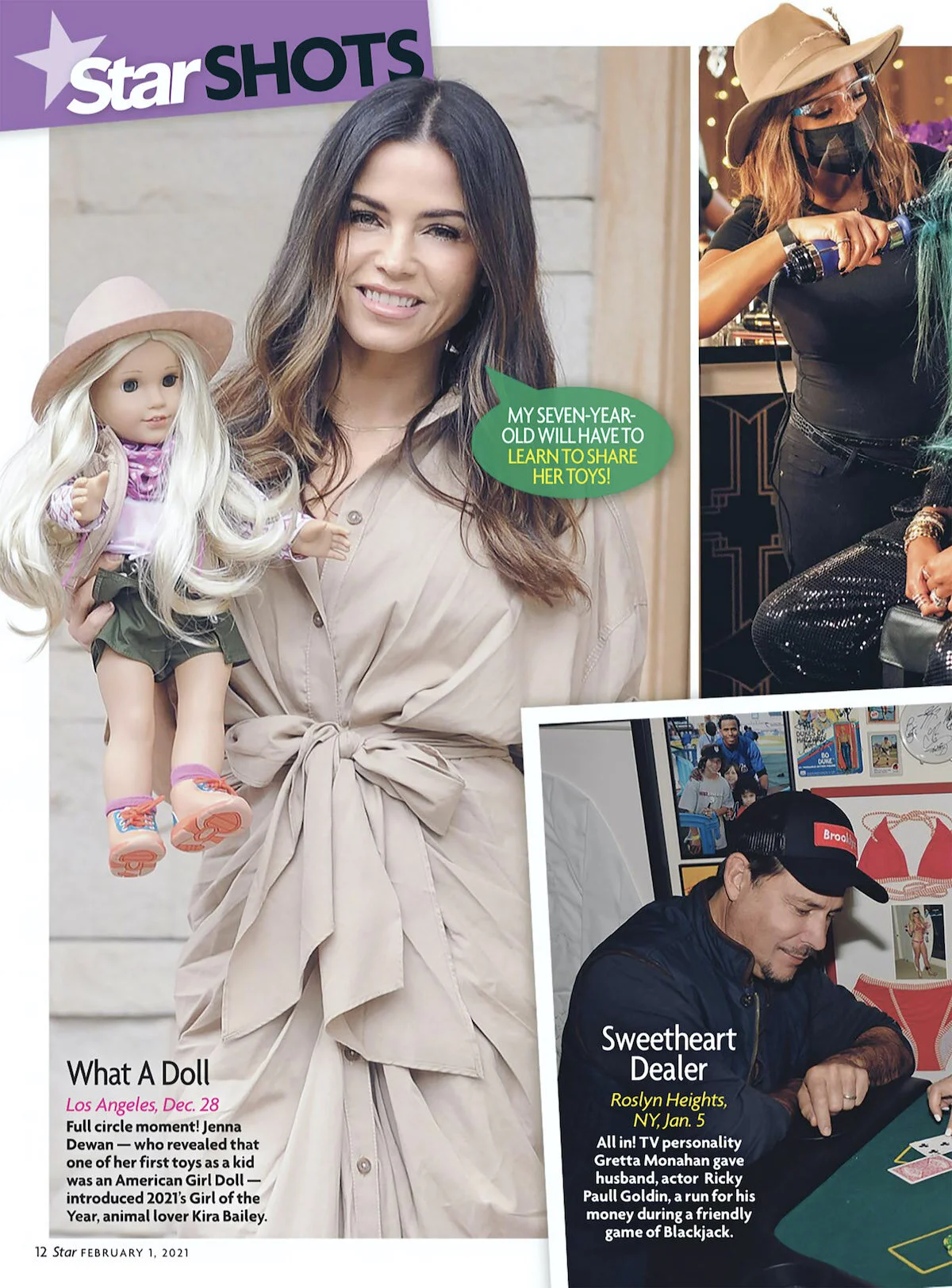More Followers = More Influence, Right?
A few weeks ago, back when we thought that kissing 2020 buh-bye meant that the worst of our problems were behind us (silly us), I was overseeing a Facebook live shoot for a brand client.
In my usual eHarmony-for-brands kinda way, I had paired a celebrity with a perfectly matched brand (it’s what I do; check out my footer). Now here we were, a small group of masked onlookers - brand manager, director, photographer, and moi - gathered at a (Covid-safe!) shoot, capturing the love between a star and a product. Celeb and brand 4eva, slow dancing and tossing the bouquet.
Buzzy from all of the cupid hearts floating into the air, I turned to my friend, the photographer, an industry leader who shoots every celebrity under the sun for all of the biggest publications. It occurred to me that I hadn’t seen him shoot any influencers, so I asked him: was mainstream media finally getting thirsty for big influencer names?
“They don’t really run,” he said.
Record scratch.
Really?
Maybe he didn’t grasp who we were talking about. Folks with MASSIVE followings. TikTok numbers that dwarf those of your garden variety celeb.
And then I experienced a Moment of Revelation.
Like that Kobayashi coffee mug-dropping Usual Suspects scene, where the cop suddenly realizes that Keyser Soze was hiding in plain sight the whole time. (In the shape of Kevin Spacey, who - it turns out - might be even scarier than Keyser Soze. But I digress.)
Here’s the Revelation:
More followers does not mean more influence.
I’m on the phone with brand managers every day, helping them launch marketing initiatives with celebrities and influencers. And often, I’ve noticed that these brand folks get fixated on one number: followers. They presume that their investment decisions should correspond to this single data point.
Their logic is easy to understand. The funny thing is, many celebs, even the A-List ones, can’t compete with the biggest influencers when it comes to followers. A-List superstar Liam Hemsworth has 13 million followers on Instagram; Cameron Dallas, who you may never have even heard of, has 21 million.
Influencers have a magical ability to absolutely crush this category. It’s why they’re influencers. It’s what they do.
Check out some TikTok stats…
Celebs:
Selena Gomez - 26M followers
Jlo - 12M followers
Justin Bieber 19M followers
Now let’s compare that to some influencer numbers:
Charli D’Amelio - 105M followers
Zach King 54M followers
Loren Gray - 50M followers
Hmmm. So does that mean that Selena has less influence than Charli? Or Jlo less than Loren Gray? Or Justin Bieber less than Zach King?
What do you think? Yeah, it’s complicated.
Now let’s turn to Instagram…
Celebs:
Jennifer Garner - 10M followers
Mandy Moore - 4M followers
Kelly Clarkson - 5.1M followers
Compared to some influencers:
Huda Kattan - 48M followers
Lele Pons - 43M followers
James Charles - 26M followers
So do you really think that Lele Pons has more influence than Jennifer Garner, Mandy Moore or Kelly Clarkson? Hmmmmmm.
Follow me while I enter the brain of a brand manager making a talent decision for her brand activation:
“Hmmm…Miley Cyrus with 8.4 million TikTok followers, or Loren Gray with 50 million, plus higher engagement, and costing us a fraction of Miley’s fee. Case closed!”
Seems pretty straightforward. But it’s not that simple.
Also read: Celebrity and Influencer Marketing is Shifting from Aspirational to Inspirational. Just Like Your Brand.
I work with both influencers and celebrities, and to be clear, I love ALL of my children equally. I don’t want to diminish for a second the awesomeness of my influencer flock.
That said, let’s be clear-eyed. Celebs may not (often) have the followers that influencers do, but they cross over to other mediums in ways that influencers don’t.
Celebrities have ascended the Runyon Canyon Park hiking trail heights of fame not just because they were jogging with their labradoodles (they were), but because of their visibility on mass market platforms like TV and film. Their fame begets more fame; the bigger their name recognition, the more their publicity multiplies across mediums.
This is why celebrities “run” in the weeklies. And Entertainment Tonight. And Access Hollywood. It’s why TMZ is poised outside their doors, watching their every move. It’s why we know the names of their labradoodles.
Influencers have massive reach. There’s simply no arguing with the numbers. For sure, every brand manager should have an influencer strategy.
But follower numbers on social media alone can’t carry the weight of your entire marketing strategy.
For example, no-name micro-influencers may have far smaller numbers than big influencers, but they’ve got a different kind of engagement. Just as big influencers create different exposure for brands than celebs.
All of these distinctions are important. And it’s not easy to keep track when the lines between celebrity and influencer keep getting blurred.
Is that an actor or influencer? I’m so confused.
The days when you were either an actor or an influencer are over.
Once upon a time, influencers were all aspiring actors. Meanwhile, actors held their noses at these social media riffraff, desperate to make it clear to the public that they were absolutely not influencers. Actors wanted to maintain Credibility. Respect. They are Artists, they’ll have you know. (*adjusts beret.)
Flash forward to today, and it’s a big ol’ melting pot of everything. Check your ‘tude at the door and dive on in, because everyone’s swimming in this omni-media pool.
You’ve got the Molly Sims’ and Jessica Albas of the world who are taking on TikTok and taking no prisoners. Pretty Little Liar Tammin Sursok is putting out hilarious TikToks that are more like SNL skits. Gwen Stefani is tardy to the TikTok game but catching up quickly. Jennifer Aniston joined Instagram late, got a million followers in a day, and now has over 36M followers.
Also read: The 3 C’s of Brand Marketing Right Now
Meanwhile, at the upper echelons of the influencer pyramid, you’ve got your Addison Raes of the world (75 million followers strong), who is literally keeping up with her new pals, the Kardashians. She just booked a studio film and has proven that influencers can cross over.
You’ve got your Charli D’Amelios (107 million followers on TikTok), who just inked a reality show deal with Hulu and nabbed a powerhouse UTA agent to become president of her family’s empire.
You’ve got your influencer content house The Hype House that’s slated to become the subject of a Netflix show, which means that those Hypers will all soon be household names. Extra credit: Hype House founder Chase Hudson just launched his own music in a major record label deal.
Jenna Dewan for our client American Girl. Star Magazine Photo by Michael Simon
Buckets, not numbers
Brand managers: if you’re trying to reach a broad, diverse audience, influencers absolutely have to be a part of your plan. 100%.
But don’t forget celebs.
Influencers have a ton of - to belabor the obvious - influence. Their numbers are massive.
But they aren’t household names. They’re huge on their social platform of choice, but they won’t easily move to other platforms.
Whereas Ciara can move to every platform. There’s a lot of bang in that celeb marketing buck that goes far beyond social.
My advice to brand managers: don’t just look at the numbers. You’ve got to draw from two different talent buckets:
Bucket #1: Talent that reaches on multiple platforms (TV/ film/ press/ social)
Bucket #2: Influencers that have high followers and engagement in their specific platform (TikTok, YT, IG)
Now go forth and develop that cross-platform marketing strategy with gusto, knowing that you’re not the gambler putting all of your organic/cage-free/hormone-free marketing eggs in one basket. You’re putting those precious investments in two sensible buckets.
P.S. - I’m great at buckets. Ping me if you need help.
Good luck!




